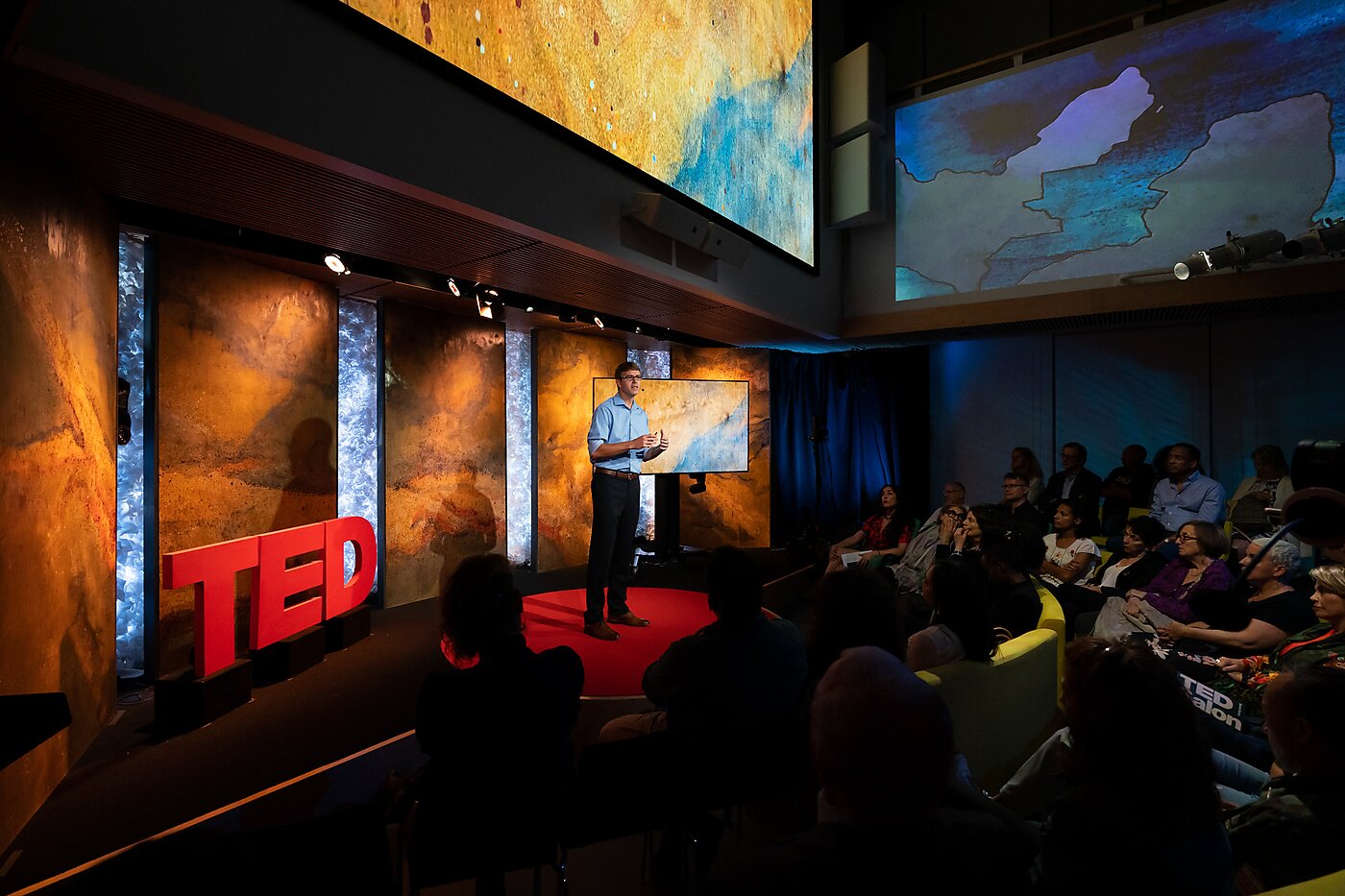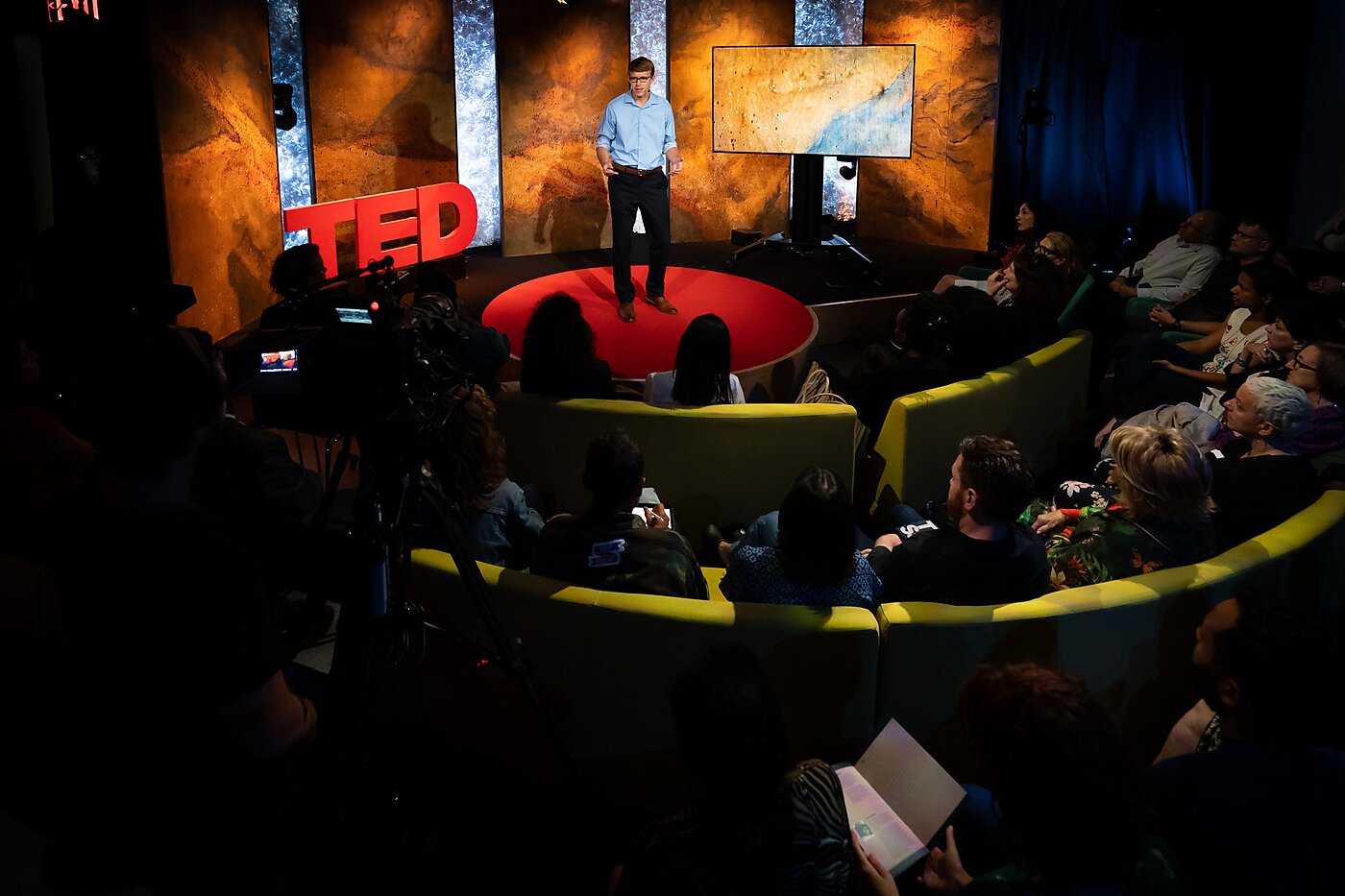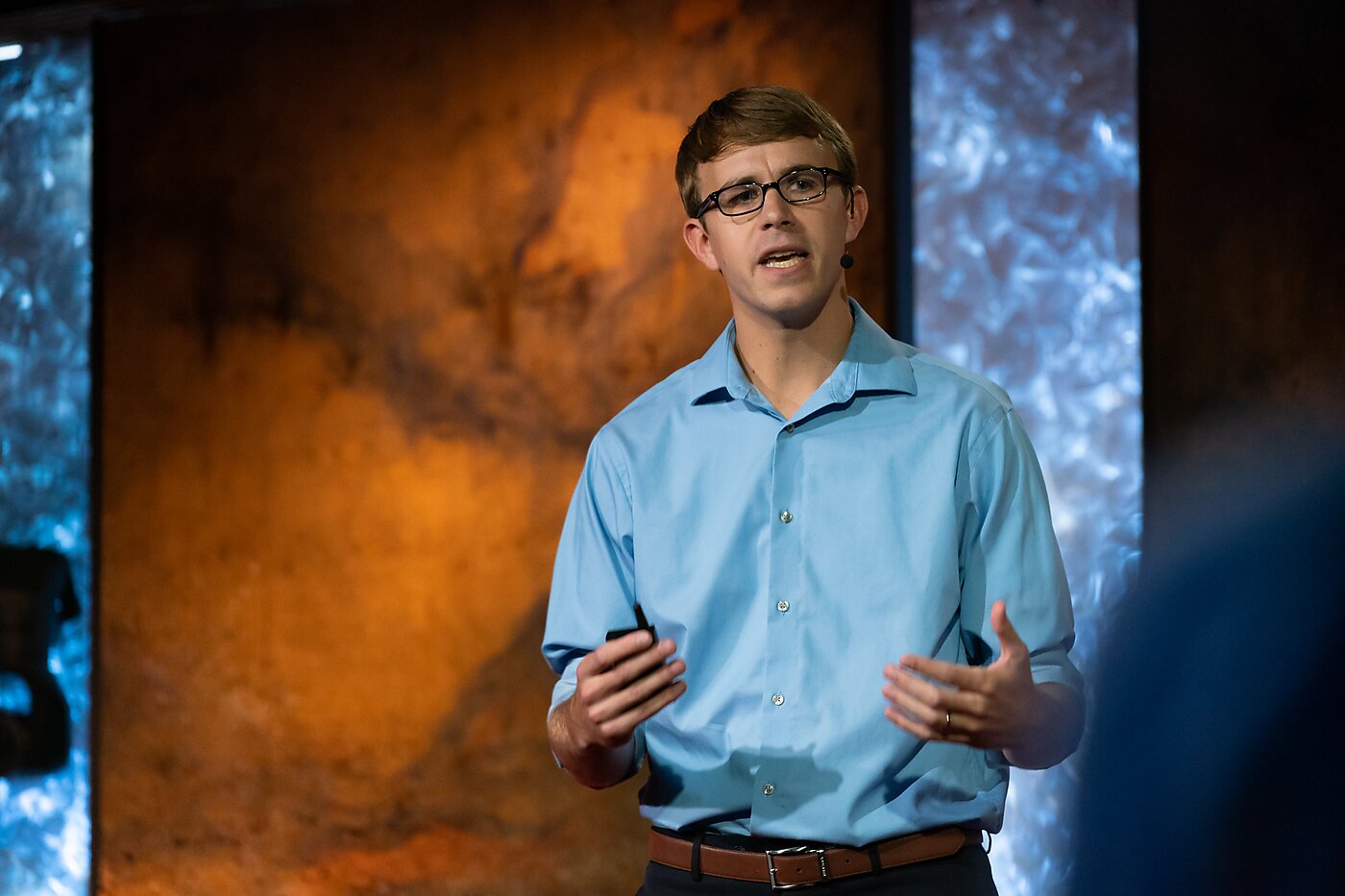Mr. Bier delivered this TED talk at the TEDSalon “Border Stories” in New York City on September 10, 2019.
By October 2018, Juan Carlos Rivera could no longer afford to live in his home in Copan, Honduras. As the Dallas Morning News reported, a gang was taking 10 percent of his earnings from his barber shop.1 His wife was assaulted going to her pre‑K teaching job, and they were concerned about the safety of their young daughter.
What could they do? Run away? Seek asylum in another country? They didn’t want to do that. They just wanted to live in their country safely. But their options were limited. So that month, Juan Carlos moved his family to a safer location, while he joined a group of migrants on the long and perilous journey from Central America to a job a family member said was open for him in the United States.
By now, we are all familiar with what awaited them at the U.S.-Mexico border: the harsher and harsher penalties doled out to those crossing there—the criminal prosecutions for crossing illegally, the inhumane detention, and most terribly, the separation of families.
I’m here to tell you that not only is this treatment wrong—it’s unnecessary. This belief that the only way to maintain order is with inhumane means is inaccurate. In fact, the opposite is true. Only a humane system will create order at the border. When safe, orderly, legal travel to the United States is available, very few people choose travel that is unsafe, disorderly or illegal.
The Mexican Success
Now, I appreciate the idea that legal immigration could just resolve the border crisis might sound a bit fanciful. But here is the good news: we have done this before.
I have worked on immigration for years at the Cato Institute and other think tanks in Washington D.C. and as the senior policy adviser for a Republican member of Congress, negotiating bipartisan immigration reform. I have seen firsthand how America has implemented a system of humane order at the border for Mexico. It’s called a guest worker program.
Here’s the even better news: we can replicate this success for Central America. Of course, some people will still need to seek asylum at the border. But to understand how successful this could be for immigrants like Juan Carlos, understand that until recently, nearly every immigrant arrested by Border Patrol was Mexican.
In 1986, each Border Patrol agent arrested 510 Mexicans—well over one per day.2 By 2019, this number was just eight. That’s one every 43 days. It is a 98 percent reduction. So where have all the Mexicans gone? The most significant change is that the United States began issuing hundreds of thousands of guest worker visas to Mexicans, so that they can come legally (Figure 1).
José Vásquez Cabrera was among the first Mexican guest workers to take advantage of this visa expansion. He told the New York Times that before his visa he’d made terrifying illegal border crossings, braving near deadly heat and the treachery of the landscape.3 One time, a snake killed a member of his group.
Thousands of other Mexicans also didn’t make it, dying of dehydration in the deserts or drowning in the Rio Grande.4 Millions more were chased down and arrested.5 Guest worker visas have nearly ended this inhumane chaos. As Vásquez Cabrera put it, “I no longer have to risk my life to support my family. And when I’m here, I don’t have to live in hiding.”6
Guest worker visas actually reduced the number of illegal crossings more than the number of visas issued. Jose Bacilio, another Mexican guest worker, explained why to the Washington Post in April 2019.7He said, even though he hadn’t received a visa this year, he wouldn’t risk all of his future chances by crossing illegally. This likely helps explain why from 1996 to 2019 for every guest worker admitted legally from Mexico, there was a decline in two arrests of Mexicans crossing illegally.8




Photo Credits: TED/Ryan Lash
Photo Credits: TED/Ryan Lash
Now it’s true that Mexican guest workers do some really tough jobs: picking fruit, cleaning crabs, landscaping in a 100-degree heat.9 Some critics maintain that guest worker visas are not actually humane and that the workers are just abused slaves. But Vásquez Cabrera thought a guest worker visa was liberating, not enslavement, and like nearly all other guest workers, he chose the legal path over the illegal one, repeatedly.10
The expansion of guest worker visas to Mexicans has been among the most significant humane changes in U.S. immigration policy ever, and that humane change imposed order on chaos.
Central American Opportunity
So where does this leave Central Americans, like Juan Carlos? Well, Central Americans received just three percent of the guest worker visas issued in 2019, even as their share of border arrests has risen to 74 percent (Figure 2).11
The United States issued just one guest worker visa to a Central American for every 78 who crossed the border illegally in 2019.12 So if they can’t get their papers at home, many take their chances, coming up through Mexico to claim asylum at the border or cross illegally, even if, like Juan Carlos, they prefer to come to work.
The United States can do better. It needs to create new guest worker visas specifically for Central Americans. This would create an incentive for U.S. businesses to seek out and hire Central Americans, paying for their flights to the United States, and diverting them from the illegal, dangerous trek north. Central Americans could build flourishing lives at home, without the need to seek asylum at the border or cross illegally, freeing up an overwhelmed system.
Some people might say that letting the workers go back and forth will never work in Central America where violence is so high.
But again, it worked in Mexico, even as Mexico’s murder rate more than tripled over the last decade, to a level higher than much of Central America.13 And it would work for Juan Carlos who said, despite the threats, he only wants to live in the United States temporarily, to make enough money to sustain his family in their new home. He even suggested that a guest worker program would be one of the best things to help Hondurans like him.
Cintia, a 29-year-old single mother of three from Honduras, seems to agree. She told the Wall Street Journal that she came for a job to support her kids and her mom.14 Surveys of Central Americans traveling through Mexico, by the College of the Northern Border in Mexico, confirm that Juan and Cintia are the norm.15 Most—not all—but most do come for jobs, even if, like the Riveras, they may also face some real threats at home.
How much would a low-wage job in the United States help a Honduran, like Juan or Cintia? Hondurans like them make as much in one month in the United States as they do in an entire year working in Honduras.16 A few years’ work in the United States can propel a Central American into its upper middle class where safety is easier to come by.
What Central Americans lack is not the desire to work, not the desire to contribute to the U.S. economy, to contribute to the lives of Americans. What Central Americans lack is a legal alternative to asylum to be able to do so legally.
Of course, a new guest worker program will not resolve 100 percent of this complex phenomenon. Many asylum seekers will still need to seek safety at the U.S. border. But with the flows reduced, we can more easily work out ways to deal with them humanely. Ultimately, no single policy has proven to do more to create an immigration system that is both humane and orderly than to let the workers come legally.
Related Content
Recommended Reading
- David J. Bier, Legal Immigration Will Resolve America’s Real Border Problems, Policy Analysis No. 879, Cato Institute, Washington, DC, August 20, 2019.
- David Bier, “Homicides in Mexico Tripled But Fewer Mexicans Came Illegally,” Cato at Liberty, August 23, 2019.
- Alex Nowrasteh and Andrew C. Forrester, “H‑2 Visas Reduced Mexican Illegal Immigration,” Cato at Liberty, July 11, 2019.
- Tu Le and Alex Nowrasteh, “Immigrant and Native Consumption of Means‐Tested Welfare and Entitlement Benefits in 2016: Evidence from the Survey of Income and Program Participation”, Immigration Research and Policy Brief No. 15, January 14, 2020.
- David Bier, “Trump’s Latest Immigration Proposal Has One Goal: Keep Immigrants Out”, Washington Post, August 13, 2019.

